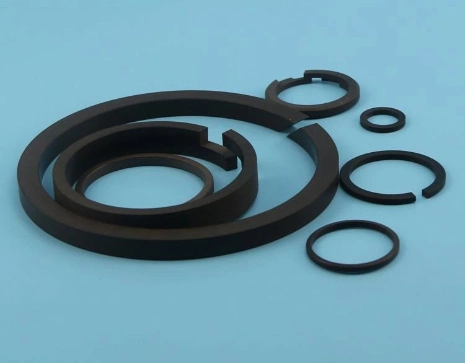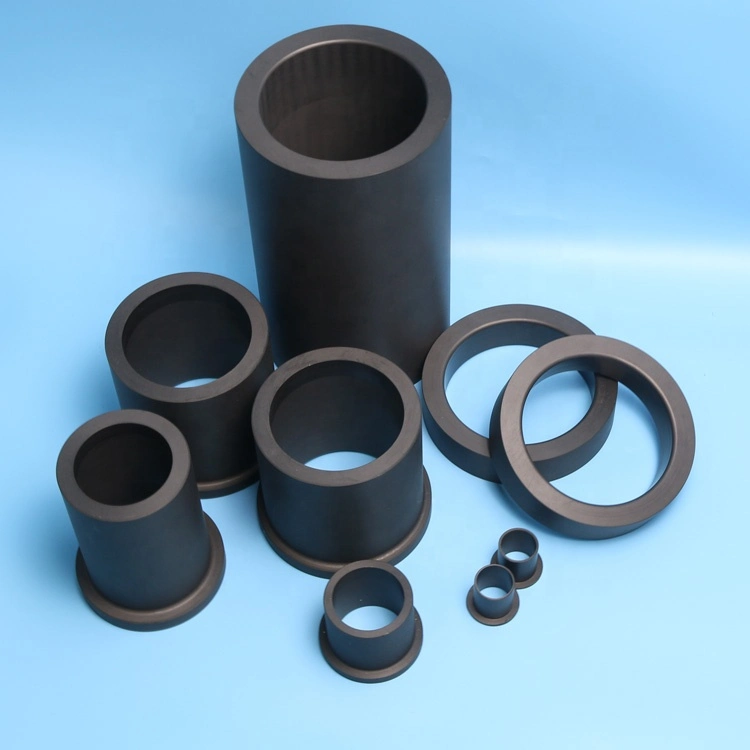

Carbon PTFE and Virgin PTFE Billets and Glassfibe PTFE
Basic Info
| Model NO. | ptfe |
| Material | PTFE |
| Kind | Plastic Bar |
| Tensile Strength | More Than 90MPa |
| Transport Package | Plywood Case |
| Specification | Standard size and custom made are available |
| Trademark | Hongda |
| Origin | Hunan China |
| Production Capacity | 20 Tons/Month |
Product Description
CARBON FILLED PTFE
Carbon filled PTFE provides improved dimensional stability and lower coefficient of thermal expansion in comparison to standard grades of PTFE. It is highly resistant to chemicals, offers good compression strength and is classified as partially electrically conductive and anti-static. 25% carbon filled PTFE offers enhanced resistance to creep, deformation and wear in comparison to the Virgin alternative, but the materials mechanical strength is still fairly limited when compared to other engineering plastics such as polyethylene. In comparison to glass filled PTFE, the material provides lower deformation under load and offers enhanced kinetic coefficient of friction.
The polymer is commonly used in high speed applications when dissipation of electric charge and low co-efficient of friction is required. Carbon filled PTFE sheet is commonly machined into shaft bearings, gaskets, shaft seals, pump components and parts used in electronic applications. At PAR Group, we have the capability to machine PTFE into bespoke requirements from drawings or existing samples utilising in-house CNC machinery. For more information regarding the services we offer, please visit our plastic machining section.
Carbon in itself is a brittle material with poor wear properties and mechanical strength. However with the two combined in Carbon Filled PTFE formulations, the resultant material has excellent mechanical and wear properties, retains the excellent frictional properties and is an excellent choice for seals and rings in dynamic and high pressure applications.
Carbon filled PTFE also provides good thermal conductivity, low permeability and is also electrically conductive making it a good choice for anti-static applications.
The most common carbon filled PTFE composition is 75% Virgin PTFE with 25% Carbon powder by weight.
It is available in black colour with a hardness of 67 shore D.

The carbon fillers improve the creep resistance, hardness and thermal conductivity of the PTFE. This material offers excellent wear properties and is particularly suitable for the use in water.
Applications
Valve seats, gaskets, washers, shaft bearings, filter housings, shaft seals, slide runners, chemical tank linings, pump and instrument components and electrical insulation parts.


When a filler ratio or type is unspecified, it is fair to assume this is the material. However it doesn't tell the whole story. The type and percentage of carbon added to PTFE is a variable and is critical to material performance.
It can be as little as 0.2% and as much as 30%. Different percentages of carbon will display different material properties and performance.
Something that is often overlooked is that different types of carbon powder can also affect the material integrity and performance. To achieve the optimum physical properties and performance from any filled PTFE it is essential that the properties and type of fillers used are understood.
Not all 25% carbon filled PTFE materials are the same, in fact they can be extremely different.
STRENGTHS
Good thermal and electrical conductivity
Good chemical resistance
Very economical
Improved wear resistance under load
WEAKNESSES
High percentage fillers mean low elongation Conductivity can be a problem








